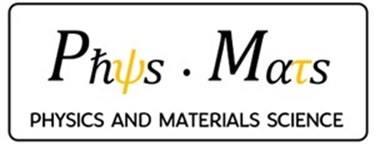(Q&A session) | Preparing Your Organization for the Quantum Era | #IYQ2025 & #ThaiYQ2025 | Anandaraman Sankaran (Toshiba Quantum Technology) | June 22, 2025 |
- K Sripimanwat
- 22 มิ.ย.
- ยาว 6 นาที
อัปเดตเมื่อ 7 ส.ค.
๐ June 2025 ๐
(Questions & Answers - บรรยายและคำถามคำตอบ)
หัวข้อประจำเดือนมิถุนายน ๒๕๖๘
สนทนา #IYQ2025 & #ThaiYQ2025
Anandaraman Sankaran, Senior Manager, QKD Marketing Toshiba Asia Pacific Pte Ltd, Singapore
.
(Q & A session: by - K Sripimanwat, Q-Thai forum)
Welcome to #IYQ2025 & #ThaiYQ2025 on Q&A session. Thanks for your talk updating Quantum Key Distribution (QKD) or quantum cryptography from Toshiba as a well known industrial company. We would appreciate your insights on the following:
Q1?: First, let’s recall to what we used to discuss many years ago, after that wonder news announced in the year 2020 as “Toshiba targets $3 billion revenue in quantum cryptography by 2030” from global QKD market $12 billion in 10 years. At this special 100th quantum anniversary 2025, we are now at the midpoint of that timeframe, could you please provide any publicly releasable information regarding Toshiba's current market gains in quantum cryptography? Specifically, has progress been higher or lower than initially anticipated, and could you share any estimated revenue figures to date?
Answer: We’re seeing significant positive momentum in the quantum cryptography market, particularly as large telecom network operators and financial institutes begin implementing quantum-safe transition strategies. Interest and engagement have grown notably in recent years, driven by heightened awareness of quantum-era cybersecurity risks and the need for forward-looking data protection solutions. Toshiba continues to play a key role in this evolution, delivering innovative quantum key distribution (QKD) technologies and collaborating with global partners to support secure infrastructure development.
Regarding specific revenue figures, we’re no longer able to share revenue target. However, as we reach the midpoint toward the 2030 target announced in 2020, Toshiba remains committed to advancing its leadership in the quantum cryptography space. The progress to date reflects strong alignment with market needs and a continued focus on driving adoption across industries.
Q2?: Technologies such as "chip, AI, and quantum computing" are increasingly integrated into national roadmaps and policies worldwide and are prominent on Gartner's Hype Cycle, a widely recognized industry reference. However, quantum cryptography appears to be absent from this cycle, despite its continued strong promotion as a premier technology. Could you offer your perspective on the current dynamics and developments within the quantum cryptography community?
Answer: Quantum cryptography is now at a pivotal stage, driven by both the rapid advancement of quantum computing and the urgent need to secure digital infrastructure against future quantum threats. Governments and industries are increasingly collaborating to develop quantum-safe frameworks as seen in leading markets such as China, South Korea, Japan, Singapore, EU, UK, US and Canada. NIST has finalized several PQC algorithms, and organizations are beginning to integrate them into their systems. QKD continues to evolve to meet infrastructure requirements in combination of terrestrial and satellite-based QKD solutions.
Q3?: IT security frameworks typically encompass seven layers. Yet, many QKD experts globally often focus on specific conditions that address or speak out only on a single or a few layers, frequently asserting absolute cryptographic security, particularly referring to the point-to-point QKD connection via "quantum channel." From Toshiba's extensive experience, could you please elaborate for classical communications engineers how QKD can be integrated into or support existing infrastructure, rather than solely advocating for the realization of only a single security layer of dedicated “quantum key distribution channel” ?
Answer: A Quantum-Safe Network, or Quantum-Secured Network, refers to a telecommunications network that combines Quantum Key Distribution (QKD) with Post-Quantum Cryptography (PQC) to provide depth and breadth of security across the entire infrastructure. Rather than being confined to a single “quantum channel,” QKD can be integrated into existing network architectures in a flexible and scalable way.
From Toshiba’s experience, QKD is not limited to point-to-point links. Through network-based architectures — including trusted nodes and key relay — QKD can be used to distribute encryption keys across broader networks. These keys can then be consumed at various layers of the telecom stack: optical (Layer 1), Ethernet (Layer 2), IP (Layer 3), and even at the application layer.
Telecom operators are beginning to deploy such multi-layered quantum-secure networks to offer commercial services. By integrating QKD and PQC into classical security frameworks, the network benefits from quantum-generated key material that strengthens existing encryption methods without requiring a complete overhaul of infrastructure. This layered approach ensures a more comprehensive and future-proof cybersecurity strategy
Q4?: We note that inside your talk, QKD on quantum platforms is presented as combining with classical key channels, utilizing key sending with Post-Quantum Cryptography (PQC). What is the specific benefit of this new approach, considering that PQC can function independently on a classical communications platform without QKD ?
Answer: Toshiba has implemented a hybrid QKD and PQC system that takes advantage of the benefits – and mitigates against the limitations – of QKD and PQC technology to deliver a ‘best of both’ solution.
Q5?: There appears to be a divergence between "demonstration or education/R&D vs. practical use in real life," "hype vs. fact," and "rhetoric vs. real-life application" in the quantum cryptography field. Furthermore, leading cybersecurity agencies, including NCSC (UK 2018), NSA (US 2020), ANSSI (France 2022), and BSI (Germany 2022), have not recommended QKD. For a non-technical audience, could you provide a "science communication" explanation of the current state and real implications within this often ambiguous community?
Answer: The current focus is moving from "proof of concept" toward "real-world integration" — building hybrid systems that combine the strengths of QKD and PQC, and working on standards, cost reduction, and usability. So, while it’s fair to say QKD isn’t a universal solution yet, it's a serious, maturing technology — not just hype. Examples are Orange Quantum Defender Service, SPTel – SpeQtral Quantum Safe Networks and London Quantum Secured Metro Network.
It’s true that several major cybersecurity agencies, like the UK’s NCSC and the US NSA, have not endorsed QKD as a near-term solution. Their position doesn’t mean QKD doesn’t work — it means that right now, it’s not the most practical or scalable option for all use cases, especially when compared to software-based solutions like Post-Quantum Cryptography (PQC), which can be rolled out more easily across digital systems.
For non technical audience, QKD is real, but its role is evolving. It's not here to replace all existing encryption overnight, but to complement it in places where the highest level of security is needed — now and in the future.
Q6?: Beyond its application in IT business, a second phase of the Thai QKD testbed is being prepared with a focus on "human resources development." Would Toshiba be open to collaborating with local non-profit QKD testbed project ? Additionally, from your perspective, do you foresee the emergence of an ASEAN or AISA QKD network?
Answer: Toshiba is open to collaborating with local non-profit QKD testbeds, particularly those focused on developing real-world use cases and fostering human resource development. While we are supportive of such initiatives, it’s important to note that deploying and maintaining QKD system testbeds requires investment from project partners. Toshiba brings technical expertise and proven solutions to such collaborations, as demonstrated through our work with national universities and research institutions worldwide
We also see the emergence of an ASEAN QKD network as a natural and promising development. With rising focus on cybersecurity and strong regional cooperation, there is a solid foundation for such a network. Toshiba would welcome the opportunity to contribute, as we view regional QKD networks as a key step toward building scalable, quantum-secure communication infrastructure across Asia
Q7?: Could you share insights into Toshiba's strategic plans for its QKD sector over the next couple of years, particularly in relation to your other core business areas ?
Answer: Toshiba has been investing in quantum technology for over 30 years and is now shifting its focus from research to commercialization, especially in Quantum Key Distribution (QKD). In 2023, Toshiba opened a £20 million UK Quantum Technology Centre to accelerate the development and deployment of quantum-secure networking solutions.
The Quantum technology centre is not only supporting current QKD technologies but is also working on next-generation solutions like chip-based QKD (for wider, mass-market adoption) and twin-field QKD (for secure connections over longer distances, potentially over 500 km).
Toshiba plans to integrate these advances with its core businesses, such as energy, water, and transportation infrastructure, using its existing expertise and customer relationships. The goal is to create new value by combining quantum security with data-driven innovation across its business areas.
Thank you for your time and consideration of these questions. We look forward to your valuable insights.
— end of Q&A session #IYQ2025 & #ThaiYQ2025.
โครงการหนึ่งร้อยปีควอนตัมโลก ครึ่งศตวรรษควอนตัมไทย
100th World & 50th Thai Quantum S&T Anniversary
(เวปหลักโครงการ - Main Web)
(รายละเอียดและกิจกรรม - Proposal & updated activities)
Alliance:
Disclaimer:
- a public serving project by volunteers
no conflict of interest & none of personal agenda involved
๐
Welcome volunteers !
๐







































